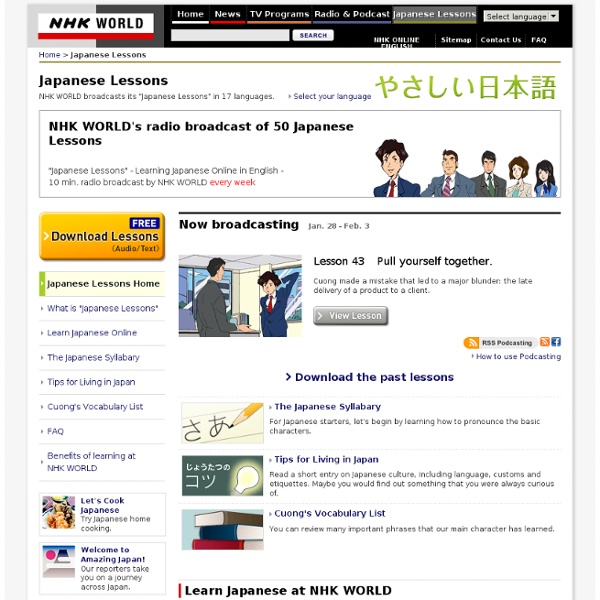Japanese Lessons, free text/audio downloads

Learn Japanese Pod
Learn Japanese Home Study Course, Distance Education, Online Classes..
Overview of Our Japanese Language Distance Education Course S&N Hayakawa Enterprises Pvt Ltd is a leading Japanese language school and cultural center in Chennai, India. We are pleased to offer you certification program through distance learning. The learn Japanese Distance Education programme aims to introduce Japanese course from beginners to Advance levels by gradually build students’ skills in listening, reading, writing and speaking and helps develop intercultural competence of the learners. The course material comprises Hayakawa Learn Japanese original Text book, Multimedia Interactive Learn Japanese Cd, Hayakawa Learn Japanese work book for Hiragana, Katakana and Kanji. Our Courses & Fee Details Process of Learning Japanese through Distance Education Certificate Course Course Highlights at Hayakawa Teaching Method Our Students' Course Opinions Vidhyasaghar from Qatar I have always wanted to learn Japanese but didn’t get to do it while I was in Chennai... Read More>> Amritha from Tanzania
Download SHIMAJIRO JAPANESE LANGUAGE MATERIAL FOR TODDLERS Torrent - KickassTorrents
Related:
Related:



